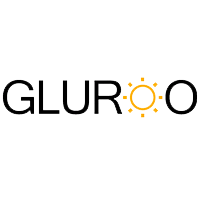
Choosing Recessed Lights for Your Home: A Comprehensive Guide
Recessed lights, also known as can lights or downlights, offer a modern and sleek lighting solution for homes. Selecting the right recessed lights involves considering various factors to ensure optimal illumination and aesthetic appeal. Here are key factors to keep in mind when choosing recessed lights for your home:
Purpose and Function:
- Ambient Lighting: If the primary purpose is ambient lighting, choose lights with wide beam angles to evenly illuminate the entire space.
-
Task Lighting: For specific tasks like reading or cooking, consider lights with a more focused beam angle to provide concentrated illumination.

Ceiling Height:
- Standard Ceilings (8-9 feet): Most homes have standard ceiling heights, and standard-depth recessed lights work well in these spaces.
-
High Ceilings (10 feet and above): Opt for adjustable or deeper recessed lights to direct the light downward effectively.

Light Bulb Type:
- LED Lights: LED bulbs are energy-efficient, have a longer lifespan, and produce less heat. They are the preferred choice for recessed lighting.
-
Color Temperature: Choose a color temperature that suits the room's purpose. Warmer tones (2700K-3000K) are cozy for living spaces, while cooler tones (3500K-4000K) are suitable for task areas.

Trim Styles:
- Baffle Trim: Minimizes glare and reduces reflection, making it suitable for general lighting.
- Open Trim: Allows for more light to be emitted and is ideal for areas where maximum brightness is required.
-
Reflector Trim: Directs light downward and is suitable for accent lighting or highlighting specific areas.

Dimming Capability:
- Compatibility: Ensure that the recessed lights are compatible with dimmer switches if you desire the flexibility to adjust the lighting intensity.
-
Dimmer Type: Choose between standard dimmers and smart dimmers depending on your preference and home automation system.

IC-Rated vs. Non-IC Rated:
- IC-Rated (Insulation Contact): Suitable for direct contact with insulation. Essential if the lights will be installed near insulation material.
-
Non-IC Rated: Requires a clearance distance from insulation. Suitable for locations without insulation.

New Construction vs. Retrofit Fixtures:
- New Construction: Ideal for new builds or major renovations where access to the ceiling is readily available.
-
Retrofit Fixtures: Designed for installation in existing ceilings without the need for extensive modifications.

Wet Location Rating:
-
Outdoor Spaces: For recessed lights in outdoor areas or bathrooms, ensure they have a wet location rating to withstand exposure to moisture.

Style and Design:
-
Aesthetic Appeal: Choose a trim style and finish that complements the overall design of the room. Options include brushed nickel, chrome, white, or black finishes.

Ease of Installation:
-
DIY vs. Professional Installation: Consider whether you are comfortable with DIY installation or if you prefer professional installation, especially for complex setups.

Budget Considerations:
-
Cost: Determine your budget and explore recessed lighting options that meet your financial constraints while providing the desired features.

Energy Efficiency:
-
Energy Star Certification: Look for recessed lights with Energy Star certification for energy-efficient options that can lead to long-term cost savings.

Choosing recessed lights involves a thoughtful consideration of various factors to ensure they meet the lighting needs and aesthetic preferences of your home. By taking into account the purpose, ceiling height, bulb type, and other considerations, you can create a well-lit and visually appealing environment in every room.


